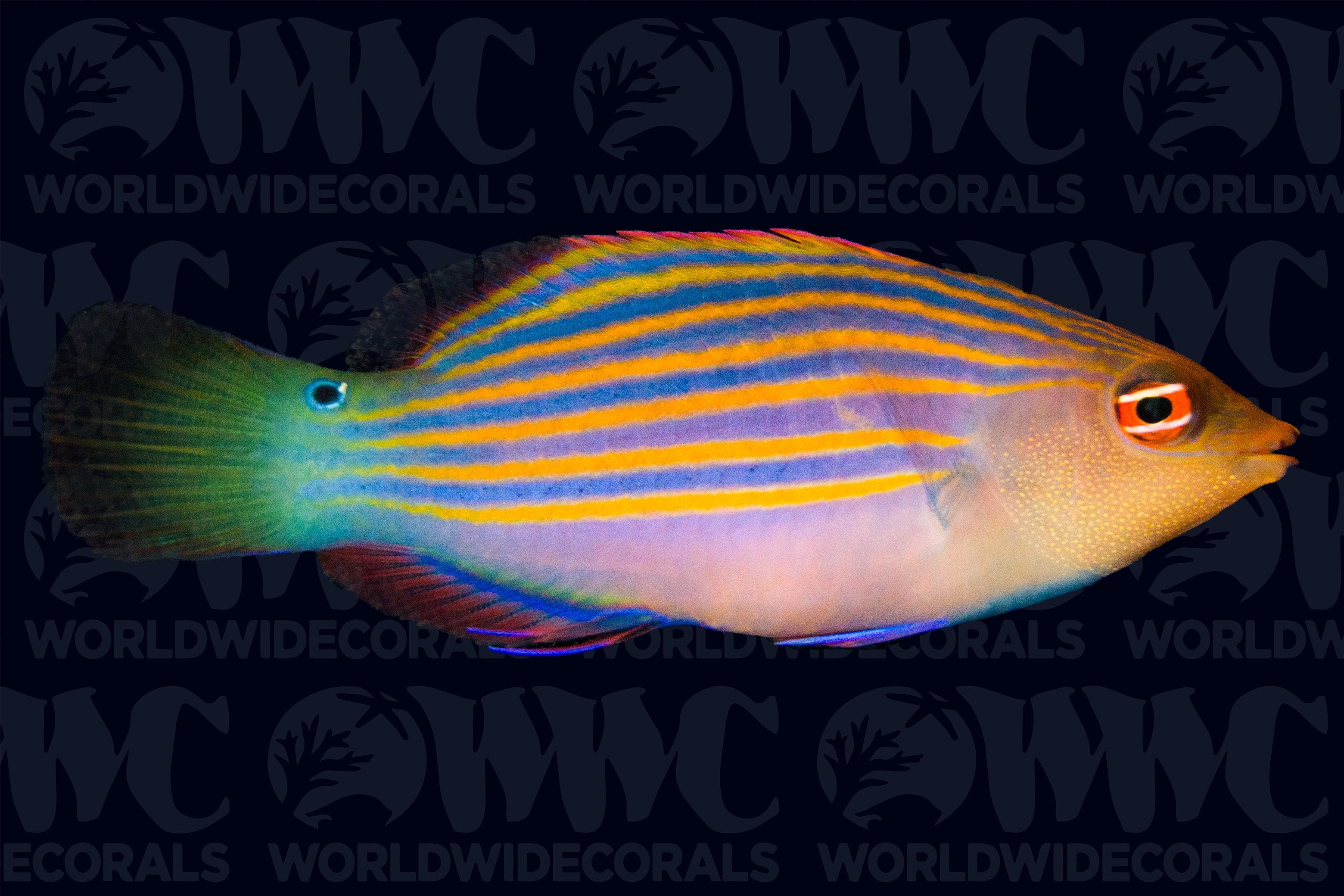Description
Pseudocheilinus hexataenia
The Six Line Wrasse is a striking and energetic addition to any reef aquarium, easily recognized by its vivid coloration and bold personality. With six distinct horizontal stripes running the length of its body, this small but active wrasse is both beautiful and beneficial—often helping to control pests such as parasitic snails that may infest Tridacna clams. Hardy and reef-safe, the Six Line Wrasse thrives in well-established aquariums with plenty of rock for hiding, hunting, and exploring. While generally peaceful, it can become territorial, especially in smaller aquariums or when kept with similarly shaped or sized fish. A tightly fitting, escape-proof lid is essential, as they are skilled jumpers. Unlike some other wrasse species, Pseudocheilinus wrasses do not bury themselves in the sand. Instead, they wedge into rock crevices, cracks, or coral branches at night for protection. They readily accept a wide range of carnivorous foods, including fresh or frozen mysis shrimp, squid, clams, and other meaty fare. Reaching up to 4 inches in length, the Six Line Wrasse requires a minimum tank size of 50 gallons. In the wild, they are found throughout the Indo-West Pacific—from the Red Sea and South Africa, eastward to the Tuamotu Islands, north to southern Japan, and south to the Lord Howe Islands with this fish being collected near the Philippines. They typically inhabit coral-rich outer reef areas at depths of up to 100 feet.
The Six Line Wrasse is a striking and energetic addition to any reef aquarium, easily recognized by its vivid coloration and bold personality. With six distinct horizontal stripes running the length of its body, this small but active wrasse is both beautiful and beneficial—often helping to control pests such as parasitic snails that may infest Tridacna clams. Hardy and reef-safe, the Six Line Wrasse thrives in well-established aquariums with plenty of rock for hiding, hunting, and exploring. While generally peaceful, it can become territorial, especially in smaller aquariums or when kept with similarly shaped or sized fish. A tightly fitting, escape-proof lid is essential, as they are skilled jumpers. Unlike some other wrasse species, Pseudocheilinus wrasses do not bury themselves in the sand. Instead, they wedge into rock crevices, cracks, or coral branches at night for protection. They readily accept a wide range of carnivorous foods, including fresh or frozen mysis shrimp, squid, clams, and other meaty fare. Reaching up to 4 inches in length, the Six Line Wrasse requires a minimum tank size of 50 gallons. In the wild, they are found throughout the Indo-West Pacific—from the Red Sea and South Africa, eastward to the Tuamotu Islands, north to southern Japan, and south to the Lord Howe Islands with this fish being collected near the Philippines. They typically inhabit coral-rich outer reef areas at depths of up to 100 feet.
3 DAY GUARANTEE | Hassle Free | 100% Satisfaction | Online Orders Only


